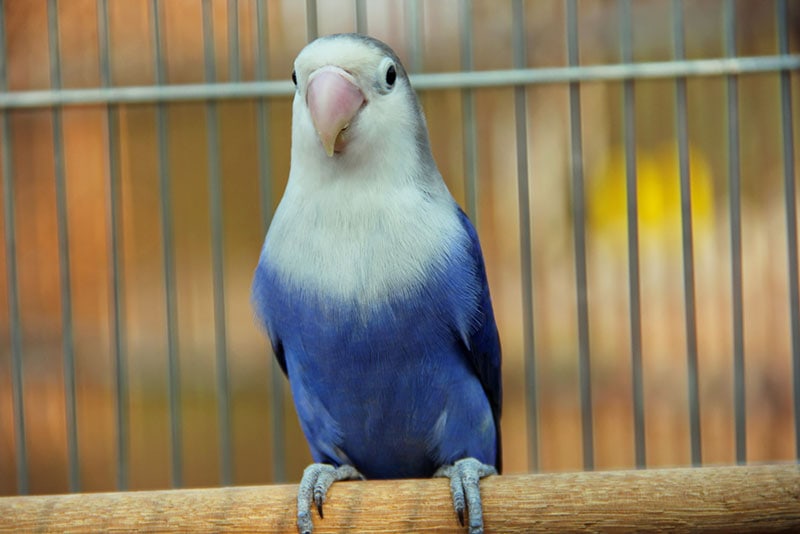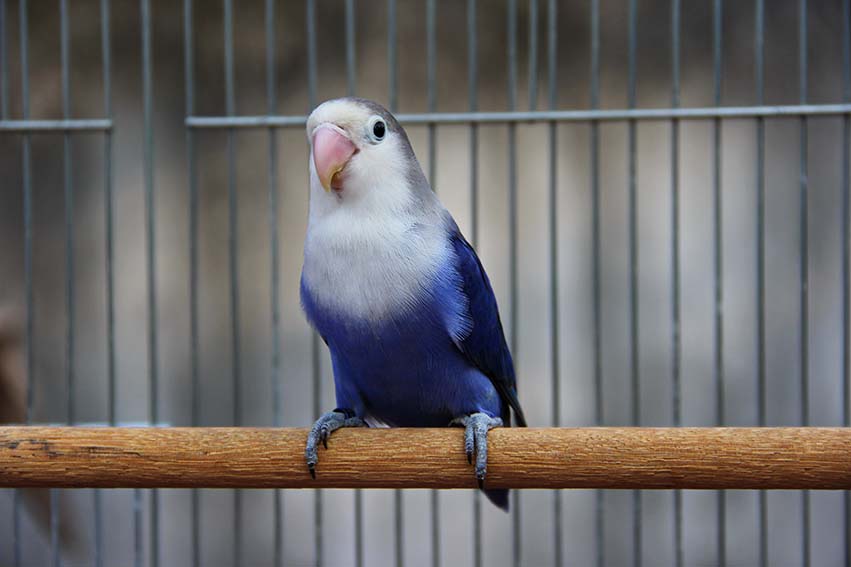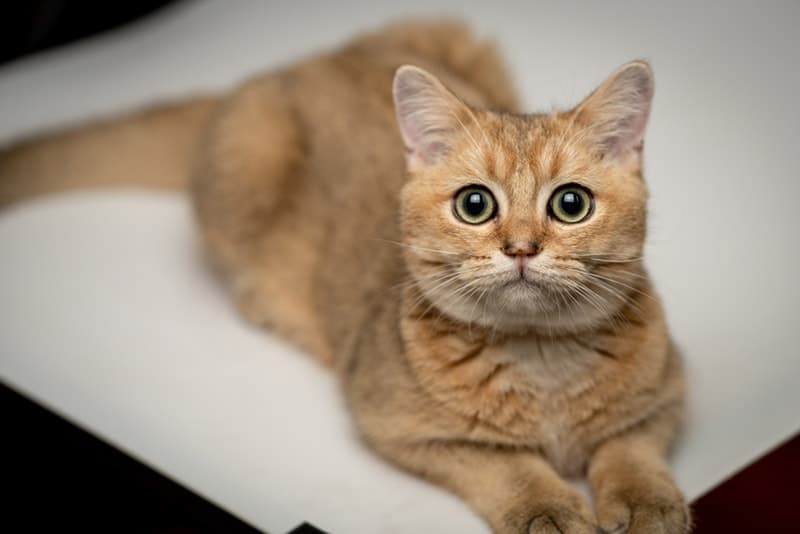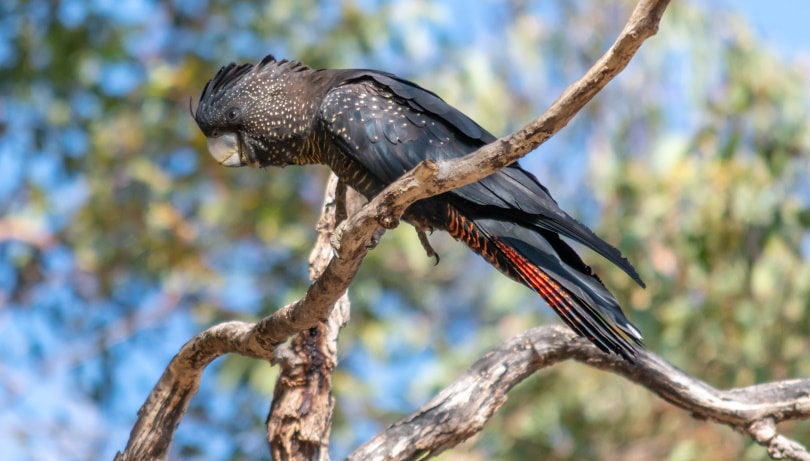Click to Skip Ahead
Lovebirds are among the smallest species of the parrot family, named for the strong pair bonds that they form, often for life. This small size comes with a large personality, though, and these birds are known for their lively, inquisitive personalities. There are nine different species of Lovebirds, although only several are usually kept as pets, most commonly, the peach-masked and Fischer’s lovebirds. Captive breeding has resulted in a wide range of gorgeous color mutations, including the Violet Lovebird.
The violet color mutation can be found in all lovebird species and is a dominant gene, meaning that you only need one parent with the violet gene to produce violet offspring. This has led to them being a popular bird for breeding, with many other violet variations available too. Read on for more information about the beautiful violet lovebird!

Species Overview

| Common Names: | Violet lovebird |
| Scientific Name: | Agapornis |
| Adult Size: | 5–6.5 inches |
| Life Expectancy: | 10–20 years |
Origin and History
Eight species of lovebird are native to sub-Saharan Africa, where they inhabit forests and savannas, while one is found only in Madagascar, an island country on the east coast of the African continent. The genus Agapornis was first introduced in the early 1800s and was first captive-bred in the United States in 1926. While Lovebirds are primarily found in Africa and captive-bred for the pet industry elsewhere in the world, they are occasionally spotted in the wild in the United States. They have been seen living in wild flocks in the North American Southwest, but these are most likely the result of lovebirds escaping from captive aviaries.
Since their introduction and rapid growth in popularity as pets, lovebirds have been selectively bred into various beautiful morphs and mutations. The violet lovebird is just one of these unique mutations, and the gene responsible for the color is dominant, meaning only one violet parent is needed to continue the mutation. That said, the gene cannot be split — either the bird will have it or not at all.
Violet Lovebird Colors and Markings
Violet lovebirds can range from very light lavender to deep purple colorations. If both parents carry the dominant gene, their color will most likely be darker, whereas a single parent with the dominant gene will more likely result in a lighter, lavender plumage. The mutation can occur in all three of the lovebird species commonly kept as pets, appearing in slight variations of violet coloring. Peach-faced and Fischer’s lovebirds with the mutation, for example, will typically retain their white faces and chests, while black-masked lovebirds will retain their black faces and have violet bodies.
All lovebirds have stocky bodies with short tails, with the characteristic hooked bill of all parrot species, and almost all lovebirds have the iconic white rings around their eyes.
Where to Adopt or Buy a Violet Lovebird
All three lovebird species are readily found in pet stores, costing as little as $25 for the common green types. For rarer mutations, you can expect to pay as much as $200 or more, depending on the breeder and availability.
Before adopting or purchasing a lovebird, it’s important to know exactly where the bird came from. Even when purchasing from a pet store, inquire about the origins of the bird, and make sure they came from an experienced breeder to avoid any health issues in the future. While a specialist avian pet store will often have a reputation to uphold and will sell healthy, happy birds, buying from a breeder is the best option. The breeder will be able to answer any questions that you may have concerning the species and may even provide you with advice later.
Adoption is arguably the best route for bringing home a violet lovebird, as you’ll be giving a bird in need a loving home, and it will cost you less. That said, it can be difficult to find a particular mutation, such as a violet lovebird, and you may need to wait a while or look at a variety of rescue organizations or adoption agencies.

Final Thoughts
No matter the color mutation, lovebirds are wonderful pets that can easily live up to 20 years in captivity. Since they are smaller than many other parrot species, they are easy to care for and feed, making them ideal for beginners. The violet lovebird is a uniquely beautiful bird not found in nature but fairly easily found available as pets. The color is caused by a unique dominant gene that is passed down from one or both violet parents and is fairly easy to replicate through breeding.
While there is a range of beautiful lovebird mutations available through breeders, the violet lovebird is a unique and striking color indeed.
- See Also: Grey-Headed Lovebird
Featured Image Credit: Athit Pradasak, Shutterstock










